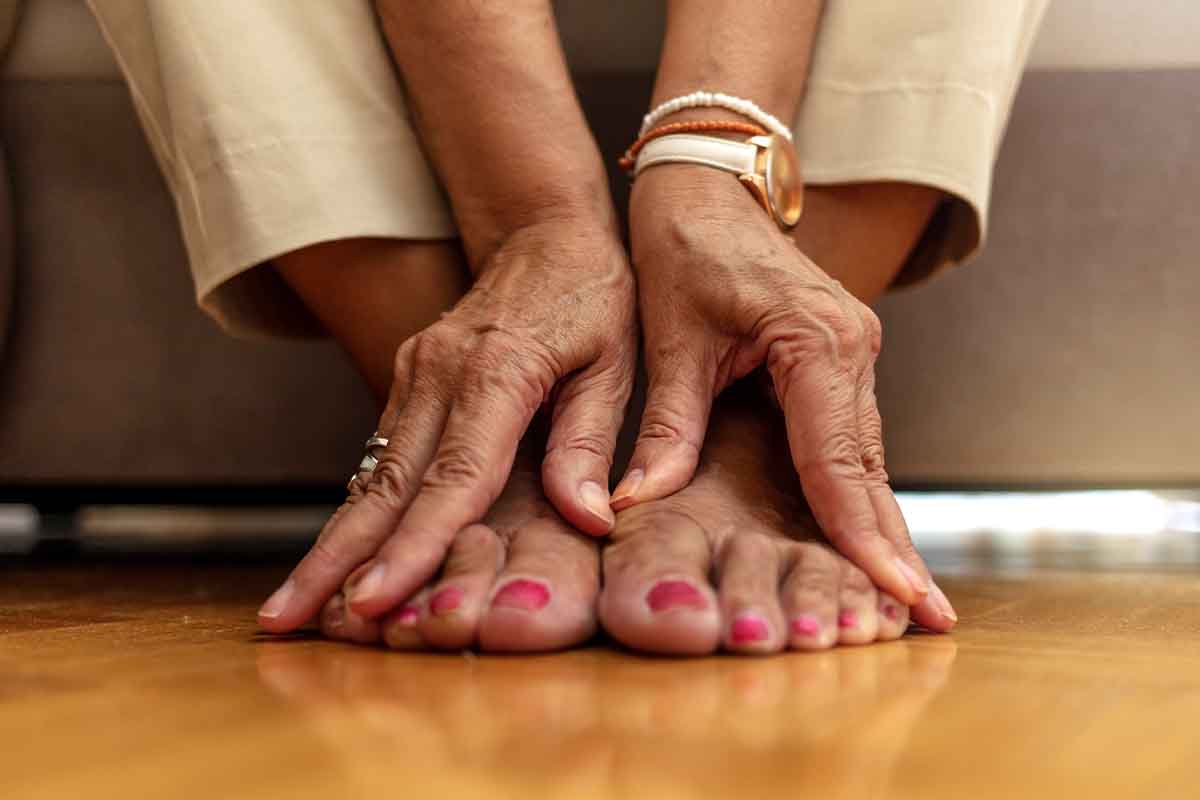Arthritis refers to inflammation of the joints, leading to pain, swelling, and stiffness. There are many forms of arthritis, but osteoarthritis (OA) is the most common type affecting the foot and ankle. Osteoarthritis occurs when the cartilage that cushions the joints breaks down over time, leading to bone-on-bone friction, which causes pain and decreased mobility. Other types of arthritis, such as rheumatoid arthritis and post-traumatic arthritis, can also affect the foot and ankle joints but are less common.
What is Arthritis?

Causes and Risk Factors
Arthritis can develop due to several factors, including:
- Age: The risk of developing arthritis increases as you age, especially after 50.
- Previous Injuries: Foot and ankle injuries, such as fractures or sprains, can increase the likelihood of developing arthritis later in life.
- Genetics: Family history can play a role. If your relatives have had arthritis, you may be at a higher risk.
- Activity Level: High-impact activities, such as running or certain sports, can contribute to joint wear and tear. Conversely, a sedentary lifestyle can also increase risk due to weakened muscles and reduced joint support.
- Obesity: Carrying excess weight places additional stress on the joints, especially the weight-bearing joints in the lower body.
- Other factors include joint deformities, inflammatory conditions (such as gout), and metabolic issues. Understanding the risk factors is vital for prevention and management of the condition.
Symptoms
Foot and ankle arthritis symptoms often develop gradually and may worsen over time. Common symptoms include:
- Joint Stiffness and Reduced Range of Motion: Arthritis can cause stiffness, especially in the morning or after resting, making it harder to move the affected foot or ankle. This can interfere with walking and daily activities.
- Pain: Foot or ankle pain that worsens with movement or weight-bearing activities. As arthritis progresses, pain may also occur during rest.
- Swelling: Inflammation can lead to visible swelling in the affected joints, often accompanied by warmth and tenderness.
- Symptoms can range from mild to severe, and if left untreated, they can significantly impact your quality of life.
Diagnosis
Diagnosing foot and ankle arthritis requires a thorough evaluation, including:
- Physical Examination: The doctor will check for signs of swelling, tenderness, and reduced range of motion in the foot and ankle.
- Imaging: X-rays are often used to assess joint damage, bone spurs, and cartilage loss. In some cases, MRIs provide detailed images of soft tissues, including cartilage, and can help assess the extent of joint damage.
- Joint Aspiration: A sample of joint fluid may be taken to rule out other conditions, such as gout or infection, and to help confirm the diagnosis.
Treatment
Treatment for foot and ankle arthritis aims to alleviate pain, reduce inflammation, and improve mobility. Both conservative and surgical treatments are available:
Conservative Treatments
- Physical Therapy: Strengthening exercises can improve joint stability and reduce pain.
- Medications: Nonsteroidal anti-inflammatory drugs (NSAIDs) can help manage pain and inflammation. In some cases, corticosteroid injections may be recommended for more severe inflammation.
- Injections: Corticosteroid injections can help reduce inflammation and provide temporary pain relief. Platelet-rich plasma (PRP) injections use the patient’s own blood to promote healing and stimulate tissue repair in the joint, helping to reduce pain and inflammation.
- Orthotics and Braces: Custom foot orthotics and ankle braces can provide support and reduce pressure on the affected joints.
Surgical Treatments
- Arthroscopy: A minimally invasive procedure that can be used to remove damaged tissue and smooth rough cartilage. It can also be used to treat osteochondral defects by repairing or removing damaged cartilage and bone, promoting healing and restoring joint function.
- Osteotomy: In some cases, an osteotomy may be performed to realign the foot or ankle, relieving stress on the affected joint. This procedure can help improve joint function and reduce pain, especially in younger patients who are not yet candidates for joint replacement.
- Joint Fusion: For severe cases, fusing the bones of the joint can provide pain relief by eliminating movement in the damaged joint.
- Joint Replacement: In cases of extensive arthritis, joint replacement surgery can restore function and alleviate pain by replacing the damaged joint with an artificial one.
- Your treatment plan will depend on the severity of your arthritis, your activity level, and your overall health. Early intervention can often delay or prevent the need for surgery.

Expertise in Foot and Ankle Arthritis Treatment
As a fellowship-trained foot and ankle surgeon with years of experience in treating arthritis, I understand the importance of personalized care. I take a conservative approach first, focusing on physical therapy, injections, and other non-surgical methods to help alleviate pain and improve mobility. When surgery is necessary, I use the latest techniques in joint preservation, arthroscopy, and reconstruction to ensure the best outcomes. My goal is to provide relief and restore function, helping you return to the activities you enjoy. My expertise in this area is demonstrated through my systematic review on treatments for arthritis in the Journal of Foot & Ankle Surgery.

